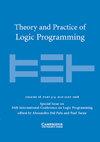基于约束逻辑程序设计的建筑信息建模
IF 1.1
2区 数学
Q3 COMPUTER SCIENCE, SOFTWARE ENGINEERING
引用次数: 0
摘要
建筑信息建模(BIM)将几何信息与材料、产品、安全等多种属性相结合,生成面向对象的三维建筑模型。BIM正在缓慢但不可避免地彻底改变建筑、工程和建筑行业。建筑物需要符合有关稳定性、安全性和环境影响的规定。手动遵从性检查是乏味且容易出错的,并且修改仅在构建时发现的缺陷会导致巨大的额外成本和延迟。有几种工具可以检查BIM模型是否符合规则/指导方针。例如,新加坡的CORENET电子提交系统检查消防安全。但是由于目前的BIM交换格式只包含建筑对象的基本信息,因此需要一个单独的、特别的模型预处理来确定,例如,疏散路线。此外,如果可能的话,他们在调整现有的内置规则和/或添加新规则(以满足建筑法规,这些法规不仅在国家之间而且在同一城市的不同地区之间可能有所不同)方面面临困难。我们建议使用基于逻辑的可执行形式(CLP和约束ASP)将BIM模型与高级知识表示和推理能力结合起来。以前的经验表明,这种形式化可以用于统一地捕获和推理大量领域中的知识(包括模糊性)。此外,在设计工具中合并检查可以确保模型在每个步骤中都符合规则。这也可以防止错误的设计必须(部分)重做,这也是昂贵和负担。为了验证我们的建议,我们在CLP(Q/R)和ASP约束下实施了一个初步的推理器,并用几个BIM模型对其进行了评估。本文章由计算机程序翻译,如有差异,请以英文原文为准。
Building Information Modeling Using Constraint Logic Programming
Abstract Building Information Modeling (BIM) produces three-dimensional object-oriented models of buildings combining the geometrical information with a wide range of properties about materials, products, safety, to name just a few. BIM is slowly but inevitably revolutionizing the architecture, engineering, and construction industry. Buildings need to be compliant with regulations about stability, safety, and environmental impact. Manual compliance checking is tedious and error-prone, and amending flaws discovered only at construction time causes huge additional costs and delays. Several tools can check BIM models for conformance with rules/guidelines. For example, Singapore’s CORENET e-Submission System checks fire safety. But since the current BIM exchange format only contains basic information about building objects, a separate, ad-hoc model pre-processing is required to determine, for example, evacuation routes. Moreover, they face difficulties in adapting existing built-in rules and/or adding new ones (to cater for building regulations, that can vary not only among countries but also among parts of the same city), if at all possible. We propose the use of logic-based executable formalisms (CLP and Constraint ASP) to couple BIM models with advanced knowledge representation and reasoning capabilities. Previous experience shows that such formalisms can be used to uniformly capture and reason with knowledge (including ambiguity) in a large variety of domains. Additionally, incorporating checking within design tools makes it possible to ensure that models are rule-compliant at every step. This also prevents erroneous designs from having to be (partially) redone, which is also costly and burdensome. To validate our proposal, we implemented a preliminary reasoner under CLP(Q/R) and ASP with constraints and evaluated it with several BIM models.
求助全文
通过发布文献求助,成功后即可免费获取论文全文。
去求助
来源期刊

Theory and Practice of Logic Programming
工程技术-计算机:理论方法
CiteScore
4.50
自引率
21.40%
发文量
40
审稿时长
>12 weeks
期刊介绍:
Theory and Practice of Logic Programming emphasises both the theory and practice of logic programming. Logic programming applies to all areas of artificial intelligence and computer science and is fundamental to them. Among the topics covered are AI applications that use logic programming, logic programming methodologies, specification, analysis and verification of systems, inductive logic programming, multi-relational data mining, natural language processing, knowledge representation, non-monotonic reasoning, semantic web reasoning, databases, implementations and architectures and constraint logic programming.
 求助内容:
求助内容: 应助结果提醒方式:
应助结果提醒方式:


